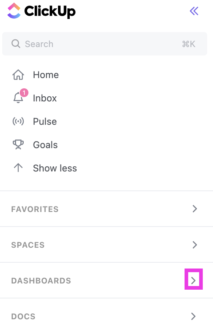Why is consistency in branding important?
Here are 5 reasons why is consistency in branding important:
The source is LinkedIn.
Memorability
Brand Recognition
Building Awareness


The source is LinkedIn.


Creating captivating content and a content strategy requires the right set of tools to streamline the process and unleash your creativity.


As we approach the swiftly-approaching year 2024, be sure to stay ahead of the curve by embracing these early-blooming digital trends.
Through thorough research, I’ve curated a selection of the most promising trends that are poised to make a significant impact in the upcoming year.
Don’t miss out on the exciting digital marketing trends in 2024!
Read this Search Engine Journal article to find out more about UGC in 2024.
In this article from Hootsuite you can find everything about AI and AI in sales, marketing and advertising.
LinkedIn has published an article about the importance of micro-influencers in 2024. Read more here.
Find out more about digital marketing world – read my blog.


Start by pinpointing your niche. What industry or area does your business operate in? Define your niche to narrow down your potential audience.
Develop detailed buyer personas for your ideal customers. Include demographics, interests, pain points, and aspirations. This helps you visualise and understand your audience better.
Use social media listening tools to track conversations, mentions, and discussions related to your niche. This provides valuable insights into what your audience cares about.
Study your competitors. Who follows them, and what kind of engagement do they receive? This data can shed light on your shared audience.
Create surveys or gather feedback from your current audience. Ask them about their preferences, challenges, and what they expect from your brand.
Continuously monitor your social media analytics. Track which posts and content resonate the most with your audience. Use these insights to refine your strategy.
Experiment with different types of content and strategies. Continuously test and iterate your approach based on the feedback and data you collect.
Engage with your audience. Respond to comments and messages, and actively participate in conversations related to your niche. This helps build a stronger connection.

Navigating the world of social media management can raise many questions, especially if you’re new to the game. In this post, we’ve compiled some of the most commonly asked questions about social media management, along with straightforward answers to guide you in the right direction.
2: The right platforms depend on your target audience and goals. Research where your audience is most active and focus your efforts on those platforms. Popular options include Facebook, Twitter, Instagram, LinkedIn, and TikTok.
A3: Your content should align with your brand, audience interests, and platform. It can include a mix of informative articles, engaging visuals, videos, industry news, and user-generated content.
A4: Posting frequency varies by platform and audience. Generally, consistency is key. Aim to post quality content regularly, but don’t compromise quality for quantity.
A5: Success can be measured through key performance indicators (KPIs) like engagement, follower growth, website traffic, and conversion rates. Use social media analytics tools to track your KPIs.
A6: The best time to post varies by platform and audience. Test different posting times and use analytics to determine when your audience is most active and engaged.
A7: Address negative comments professionally and promptly. Acknowledge the issue, offer to resolve it privately, and maintain a respectful tone. Publicly demonstrating your commitment to customer satisfaction can enhance your brand’s reputation.
A8: Yes, a social media calendar helps plan, organize, and schedule content in advance. It ensures consistency and frees up time for engagement and real-time responses.
A9: Organic social media involves non-paid content and relies on engagement and shares. Paid social media involves advertising, promoting posts, and targeting specific audiences with paid campaigns.
A10: Hiring a social media manager can be a wise investment, especially if you lack the time or expertise to manage your social media effectively. A skilled manager can create, schedule, analyze, and engage on your behalf.

Example: Instead of setting a vague objective like “Increase website traffic,” make it specific: “Increase organic website traffic by 20% over the next six months.”
Example: Instead of saying “Improve customer satisfaction,” make it measurable: “Increase the customer satisfaction score from 75% to 90% in the next year.”
Example: Instead of setting an unrealistic goal like “Double the company’s revenue in one month,” set an achievable objective: “Increase monthly revenue by 15% in the next quarter.”
Setting goals following SMART will make your marketing plan creation easier, let me know if this article was helpful!

100 uses of Dashboards are available on the Free Forever Plan. Uses include the following actions:
Remove a Dashboard
Most of the ClickUp Dashboard features are included in a free plan. ClickUp premium will offer wider selection of cards and dashboard options. You can try premium with a free trial.

Create and manage your Dashboards from the Sidebar using the Dashboard settings menu.
Click the ellipsis … next to any Dashboard to choose from the following options:

Branding is more than just a logo and a name; it’s about creating a distinctive identity that resonates with your audience. One of the most potent tools at your disposal for shaping your brand’s identity is colour theory.
In this blog post, we’ll explore how colour theory affects branding and why it matters.
Think of your brand as a character in a story. Colours can help define your brand’s personality and set the tone for your narrative. For instance, a tech company might gravitate towards sleek, modern colours like blue and silver, evoking a sense of professionalism and innovation. On the other hand, a children’s toy brand may opt for vibrant, playful colours that convey a sense of fun and adventure. The colours you choose should align with the story you want to tell about your brand.
Colours are a universal language that can communicate emotions without words. When developing your brand, consider the emotional impact you want to have on your audience.
Do you want to make them feel excited, calm, or inspired? Each colour has the power to evoke specific emotions. Align your colour choices with the emotional response you want to trigger in your audience.
Consistency is key when it comes to branding. By using the same colours consistently across all your brand materials, you create a strong association in people’s minds. Over time, they come to recognize your brand by its colour palette, making it easier to remember and recall. Consistency breeds familiarity, which in turn breeds trust.
In a crowded marketplace, standing out is crucial. Your choice of colours can be a powerful differentiator. If most brands in your industry use similar colours, selecting a unique colour palette can make your brand more distinctive. This distinction can be the deciding factor that sets you apart from the competition.
If your brand has a global presence, cultural interpretations of colors become an essential consideration. Colours can hold vastly different meanings in various cultures. What’s considered lucky in one country might symbolize something entirely different in another.
Ensure that your colour choices are culturally sensitive and relevant to your target audience.

Colours can also be used strategically to prompt action. Consider the famous “Buy Now” button. It’s often displayed in a contrasting colour that draws attention and encourages clicks.
Different demographics may have varying colour preferences and associations. Consider the age and gender of your target audience when selecting your colour palette.
Your brand will live in various media and platforms, from digital to print. Think about how your colour palette will work across these different mediums.